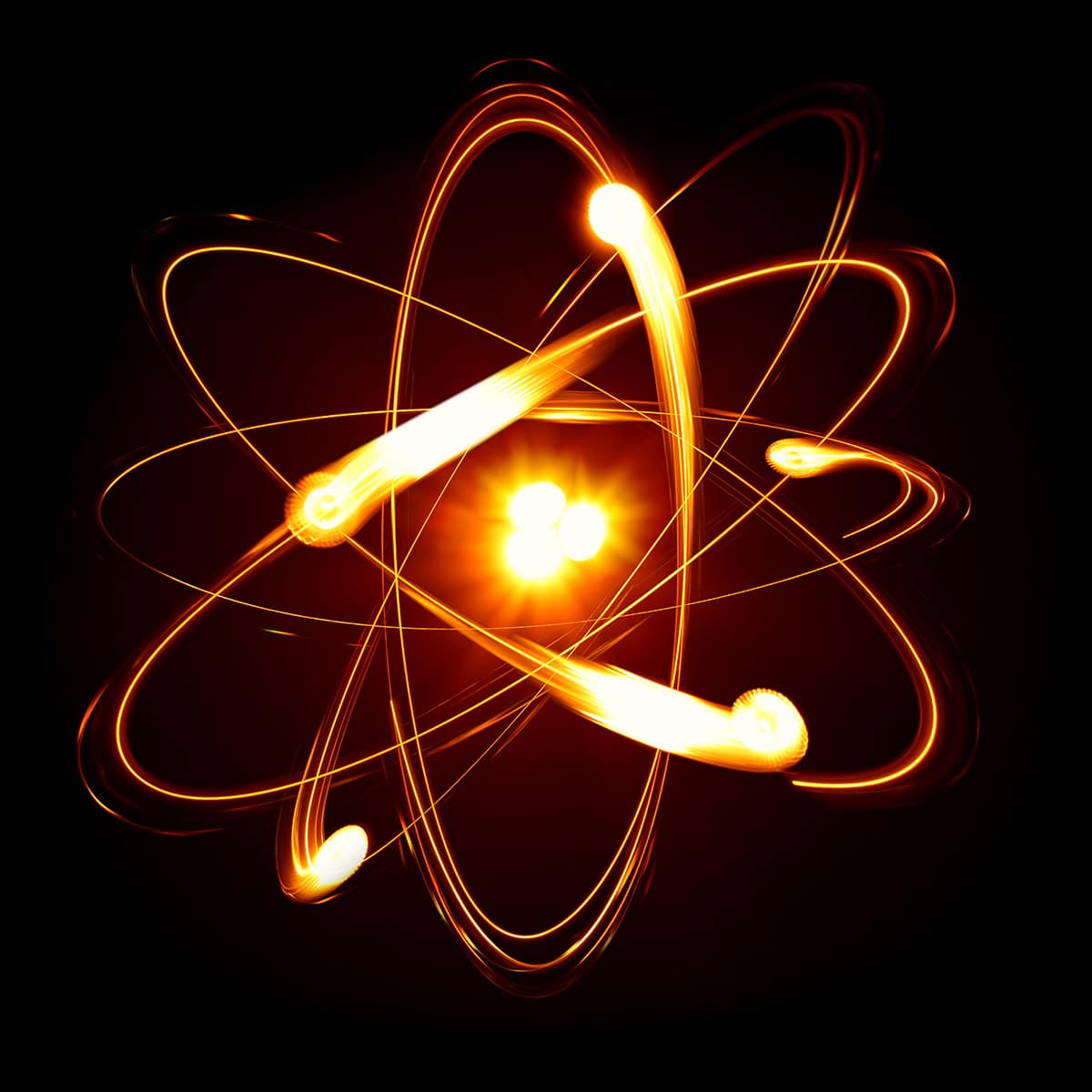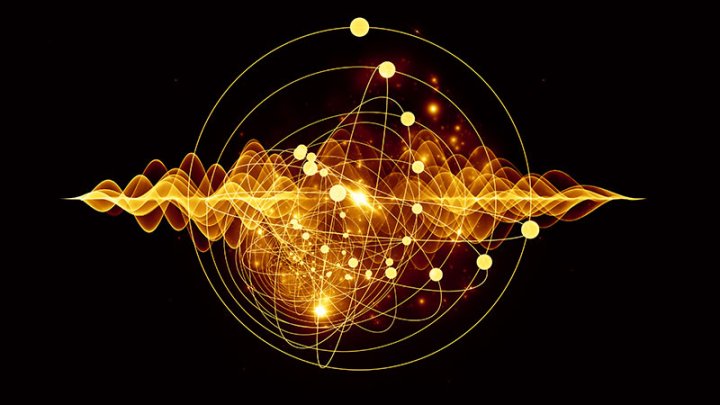Angular Momentum
Published:
This is one of the key postulates of Bohr’s atomic model, stating that the angular momentum $L$ of an electron in a stable orbit is quantized, i.e., it can only take specific discrete values depending on an integer $n$.
\[L = n \cdot \frac{h}{2\pi}\]🧠 Goal of the Explanation:
We’ll explain:
- What this equation represents (in terms of physics)
- Why it’s important (Bohr’s postulate)
- How it came to be (historical + mathematical reasoning)
- What math/physics concepts it uses
🧪 1. What does the equation mean?
- $L$ is the angular momentum of an electron orbiting the nucleus.
$h$ is Planck’s constant:
\[h \approx 6.626 \times 10^{-34} \, \text{Js}\]- $2\pi$ appears because we’re dealing with circular motion.
$\frac{h}{2\pi}$ is often written as $\hbar$ (pronounced “h-bar”):
\[\hbar = \frac{h}{2\pi}\]- $n \in \mathbb{Z^+}$ is the principal quantum number: 1, 2, 3, …
Thus, Bohr said:
“The angular momentum of an electron in orbit is quantized and must be an integer multiple of $\hbar$.”
🔁 2. Why quantize angular momentum?
Bohr’s atomic model was built to explain why electrons don’t spiral into the nucleus and why hydrogen has a discrete line spectrum.
In classical physics:
- An electron in orbit should emit radiation continuously.
- It should lose energy and spiral inward — but atoms are stable!
- So Bohr postulated: Electrons can only exist in orbits where their angular momentum is quantized.
That’s where the equation:
\[L = n \cdot \frac{h}{2\pi}\]comes in — it’s a quantization condition.
⚙️ 3. How did Bohr come up with it?
Bohr didn’t derive it purely mathematically — it was a bold postulate inspired by the new ideas of quantum theory, particularly Planck’s and Einstein’s work on quantized energy.
But later it was justified using de Broglie’s hypothesis and wave mechanics.
🔁 4. Deeper Mathematical Justification (via de Broglie)
After Bohr, in 1924, Louis de Broglie suggested that electrons have wave properties, and their orbits must fit whole wavelengths:
\[\text{Circumference of orbit} = n \lambda \Rightarrow 2\pi r = n \lambda\]Since de Broglie said:
\[\lambda = \frac{h}{p} = \frac{h}{mv}\]Substitute:
\[2\pi r = n \cdot \frac{h}{mv} \Rightarrow mvr = \frac{nh}{2\pi} \Rightarrow L = mvr = n \cdot \frac{h}{2\pi}\]🧠 So from de Broglie’s wave-particle duality, we get Bohr’s angular momentum quantization as a natural result of standing waves!
📐 5. What is Angular Momentum? (Quick Refresher)
In circular motion:
\[L = m v r\]Where:
- $m$ = mass of electron
- $v$ = orbital speed
- $r$ = radius of orbit
Bohr said this quantity $L$ can only be $n \cdot \hbar$, not just anything.
🔢 Summary:
| Concept | Meaning |
|---|---|
| Equation | $L = n \cdot \frac{h}{2\pi}$ |
| Describes | Quantized angular momentum of electrons in Bohr orbits |
| Postulated by | Niels Bohr (1913) |
| Supported by | de Broglie’s wave hypothesis (1924) |
| Key idea | Electron orbit must accommodate a whole number of de Broglie wavelengths — standing waves only! |
step-by-step derivations
- Radius of Bohr orbit $r_n$
- Energy of electron in $n^\text{th}$ orbit $E_n$
- (Bonus): Visual of the standing wave condition (why angular momentum is quantized)
🔷 1. Derivation of Radius $r_n$
We’ll derive the Bohr radius formula starting from physics principles:
🔹 Step 1: Use centripetal force = electrostatic force
An electron moves in a circular orbit, so:
\[\text{Centripetal force} = \text{Coulomb (electrostatic) force}\] \[\frac{mv^2}{r} = \frac{k e^2}{r^2}\]Where:
- $m$ = electron mass
- $v$ = velocity
- $r$ = orbit radius
- $e$ = electron charge
- $k = \frac{1}{4\pi\varepsilon_0}$ (Coulomb constant)
🔹 Step 2: Use Bohr’s angular momentum quantization
\[L = mvr = n \cdot \frac{h}{2\pi} \Rightarrow v = \frac{n h}{2\pi m r}\]🔹 Step 3: Substitute velocity $v$ into force equation
\[\frac{m}{r} \left(\frac{n h}{2\pi m r}\right)^2 = \frac{k e^2}{r^2}\]Simplify:
\[\frac{n^2 h^2}{4\pi^2 m r^3} = \frac{k e^2}{r^2}\]Multiply both sides by $r^3$:
\[\frac{n^2 h^2}{4\pi^2 m} = k e^2 r\]Solve for $r$:
\[r = \frac{n^2 h^2}{4\pi^2 m k e^2}\]This is the Bohr radius formula. For hydrogen ($Z = 1$):
\[r_n = n^2 \cdot a_0\]Where $a_0 = \frac{h^2}{4\pi^2 m k e^2} \approx 0.529 \times 10^{-10} \, \text{m}$
🔷 2. Derivation of Energy $E_n$
Total energy of the electron is:
\[E = \text{Kinetic Energy} + \text{Potential Energy}\]🔹 Step 1: Kinetic energy
From above:
\[\frac{mv^2}{r} = \frac{ke^2}{r^2} \Rightarrow mv^2 = \frac{ke^2}{r}\]So:
\[K.E. = \frac{1}{2} mv^2 = \frac{1}{2} \cdot \frac{ke^2}{r}\]🔹 Step 2: Potential energy
Potential energy in a Coulomb field:
\[U = - \frac{ke^2}{r}\]🔹 Step 3: Total energy
\[E = K.E. + U = \frac{1}{2} \cdot \frac{ke^2}{r} - \frac{ke^2}{r} = -\frac{ke^2}{2r}\]Now substitute $r$ from radius formula:
\[r = \frac{n^2 h^2}{4\pi^2 m k e^2} \Rightarrow \frac{1}{r} = \frac{4\pi^2 m k e^2}{n^2 h^2}\]So:
\[E_n = -\frac{1}{2} ke^2 \cdot \frac{4\pi^2 m k e^2}{n^2 h^2} = -\frac{2\pi^2 m k^2 e^4}{n^2 h^2}\]This gives the energy levels of the hydrogen atom:
\[E_n = -\frac{13.6\, \text{eV}}{n^2}\]🌀 3. Diagram: Standing Wave Condition
Let’s describe how standing wave = quantized orbits:
⚛ De Broglie Hypothesis:
Electron has wavelength:
\[\lambda = \frac{h}{mv}\]For a stable orbit, the circumference must fit a whole number of wavelengths:
\[2\pi r = n \lambda\]Otherwise, the wave interferes destructively and cancels itself.
This directly leads to:
\[mvr = n \cdot \frac{h}{2\pi} \Rightarrow L = n\hbar\]✅ This matches Bohr’s postulate!
📊 Visualization (text-based)
| Orbit Number | Wave Fit Around Orbit |
|---|---|
| $n = 1$ | One full wave around the circle — 🔁🌊 |
| $n = 2$ | Two full waves around the circle — 🔁🌊🌊 |
| $n = 3$ | Three full waves — 🔁🌊🌊🌊 |
In each case, the wave constructively interferes, making a stable standing wave.
✅ Summary
| Concept | Formula |
|---|---|
| Radius of orbit | $r_n = \frac{n^2 h^2}{4\pi^2 m k e^2} = n^2 a_0$ |
| Bohr radius | $a_0 = 0.529 \times 10^{-10} \, \text{m}$ |
| Angular momentum quantized | $L = n \cdot \frac{h}{2\pi}$ |
| Energy of orbit | $E_n = -\frac{13.6}{n^2} \, \text{eV}$ |

